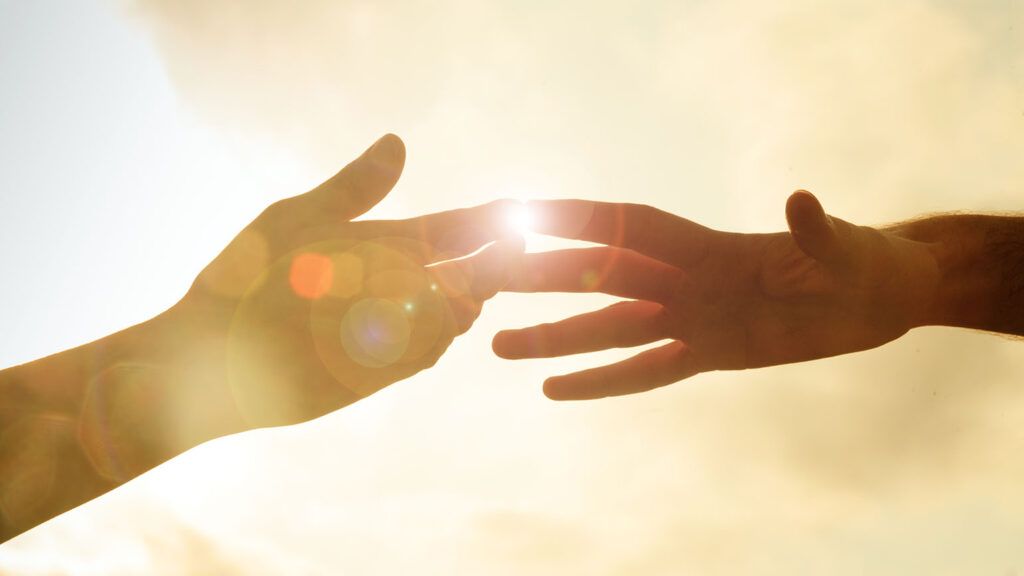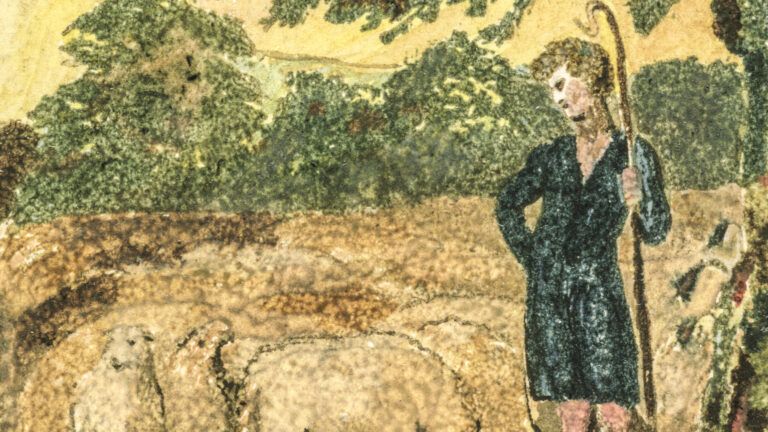Jeff Olsen arrived at the hospital after a car accident. His wife and child both died in the accident and doctors were working to revive him. Dr. Jeff O’Driscoll, another doctor at the hospital who had never met Olsen, went to his room in the ER. There he saw a woman floating above Olsen’s gurney. She looked at Dr. O’Driscoll intently, then disappeared. He innately knew this was Jeff Olsen’s wife, expressing her gratitude to the medical staff for saving her husband.
The story of Jeff Olsen and Dr. Jeff O’Driscoll appears in the August/September 2020 issue of Mysterious Ways. It’s one of the most profound stories I’ve ever worked on. While editing it, I had a lot of questions about what exactly had gone on between these two strangers. A little preliminary research revealed that what Dr. O’Driscoll and Jeff Olsen had experienced was known as a “Shared-Death Experience.” But I wanted to know more about these mysterious phenomena. How do they happen? And why?
I took my questions to William Peters, a psychotherapist, founder of the Shared Crossing Project, and director of its research initiative. Started in 2013, the Shared Crossing Project is dedicated to educating people about the profound experience of death and the healing opportunities in end of life phenomena. After having two Near-Death Experiences himself, and encountering multiple Shared-Death Experiences (SDEs) while working in hospice, Peters decided to study end-of-life phenomena, specifically SDEs.
Peters defines a Shared-Death Experience as when a living person shares in the transition of someone dying. “They experience the initial stages of the afterlife. It can happen to caregivers, loved ones, or even just bystanders.”
According to Peters, every SDE is different, but some common examples include visions of the dying appearing healthy and happy, seeing a mystical light, or even entering a heavenly realm with the dying person. They can happen as waking visions, out-of-body experiences, or sometimes while we sleep. “It’s a dynamic experience,” he says. “We are being allowed to witness a journey from this human life into what lies beyond.”
But how does a living person experience this transition? Peters and his research team have organized these experiences into four types of participation: sensing, witnessing, accompanying, and guiding.
Sensing is a feeling or intuitive knowing that a loved one is dying. This type of participation occurs when the loved one is located apart from the dying, or not at the bedside of the dying. It is often accompanied by a profound sense of the dying’s presence.
Witnessing is when the experiencer sees part of the dying process that’s often reported by those who’ve had NDEs—a glimpse of the dying person’s life review or of the dying person being greeted by a deceased loved one in heaven.
Accompanying is when the experiencer goes with the loved one towards a heavenly light, or through a tunnel. Peters shared the profound and beautiful story of this type of SDE experienced by a woman who was her dying husband’s caregiver. When he passed, she joined him as he ascended. She felt the euphoric bliss of heaven, and saw her husband’s mother, who had already passed. She handed him over to her. Then it was over. She was left feeling like she’d gotten reassurance and closure. “For her, it was an affirmation that her husband was at peace, and with his beloved mother,” said Peters.
Guiding is a type of SDE which can help loved ones to let go. “One of our experiencers had his while he was flying in a plane,” Peters said. “He was relaxing in his seat when a vision came to him. His father was there and confused and didn’t know where to go. Inherently, the son knew his dad needed to go toward a light. He helped him and watched his father go through a portal. When the son landed, he learned his father had died.”
Listening to Peters discuss the different kinds of SDEs, I couldn’t help but think of Near-Death Experiences. I’ve edited multiple NDE stories for Mysterious Ways and they sounded just like the experiences Peters was describing–tunnels, seeing deceased loved ones, a heavenly light. Of course, the distinct difference between NDEs and SDEs is that an NDE is an experiencer’s own brush with death, while an SDE is the experiencer being allowed to participate in another person’s dying process.
Peters says that’s precisely why SDEs help to validate NDEs as a real experience. “Some dismiss NDEs as just the body’s biological response to physical trauma,” he says. “But for SDEs, this is a mystical experience happening to a healthy person. And there are so many commonalites in firsthand accounts of NDEs and SDEs, it has to be more than a coincidence.”
How a person reacts to the SDE is just as telling for Peters as the SDE itself. The reactions are overwhelmingly positive. The experiencers report feeling at peace, knowing that their loved one is in a better place, and that they will see them again. For some, it reaffirms their faith and gives them a better sense of purpose.
The most common take-away, though, is a sense of healing and a knowledge that their connection to their loved ones can continue after death. “They still feel the loss of their loved one, but now this loss is held in a larger context imbued with greater meaning and a knowing that everything is fine just as is,” Peters says. “They see it as a natural part of the human experience. And that there was some kind of benevolent power behind it that was allowing them to see it so they could heal.”
This was certainly the case for Jeff Olsen and Dr. Jeff O’Driscoll. Afterwards, the two men bonded over their shared experience and became life-long friends. They discussed their experiences together and eventually came to a place of closure and spiritual peace. And while exactly how we have these profound experiences might always remain a mystery, why we do is clear: to broaden our spiritual understanding, and to help us heal.
Did you enjoy this story? Subscribe to Mysterious Ways magazine.




